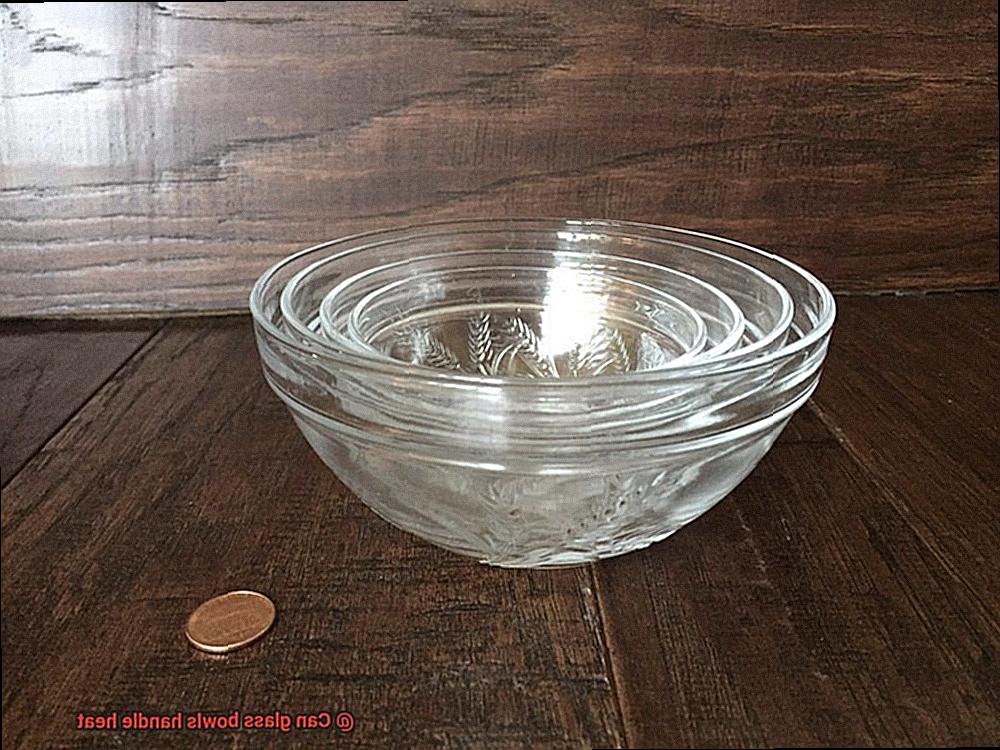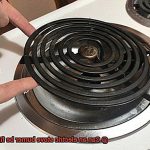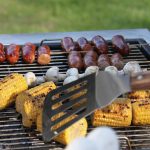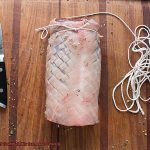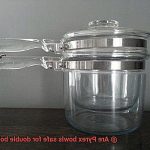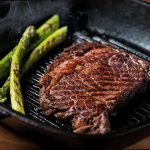Glass bowls are a kitchen essential that can be used for various purposes, including serving food, mixing ingredients, and storing leftovers. However, one question that often comes up is whether or not glass bowls can handle high temperatures. Can they? It’s a topic that sparks debate among cooks and chefs alike.
Just imagine being in the middle of preparing your favorite dish with your go-to glass mixing bowl when you realize you need to add some hot liquids to the mix. Suddenly, you start to worry about the possibility of shattered glass and ruined dinner. So what’s the deal with glass bowls and heat?
In this blog post, we’re going to dive into the science behind how glass reacts to heat, explore different types of glass that can withstand high temperatures, and provide tips on how to safely use glass bowls in your kitchen. Whether you’re baking, broiling, microwaving or cooking on the stove top – we’ve got you covered.
So if you’re curious about whether or not your trusty glass bowl can handle heat without breaking a sweat (or shattering), keep reading. By the end of this post, you’ll have all the information needed to confidently use your glass bowls without any worries about high temperatures ruining your meal.
Contents
What is Tempered Glass?
Tempered glass is a remarkable material that has become increasingly popular in a wide range of applications, from cookware to windows and phone screens. This type of glass has been treated with heat and chemicals to increase its strength and durability, making it a reliable and long-lasting choice for many households and industries.
The process of tempering glass involves heating it to a very high temperature, typically around 620 degrees Celsius, and then rapidly cooling it down. This creates a surface compression on the glass, making it up to four times stronger than regular glass. The result is a material that is less likely to break or crack under normal conditions.
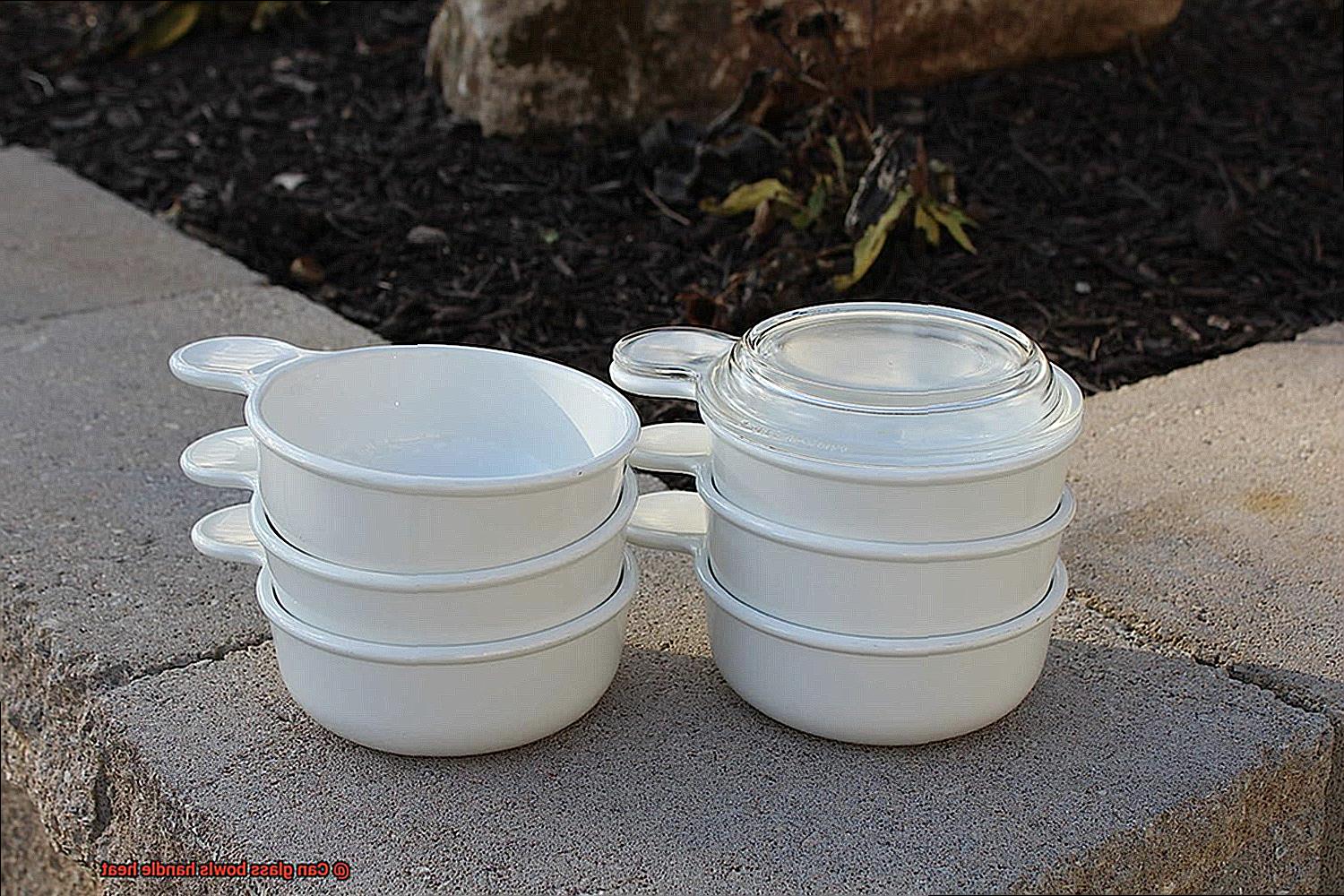
One of the key advantages of tempered glass is that if it does break, it shatters into small, rounded pieces instead of sharp shards. This makes it safer for many applications, including cookware and phone screens, where accidental breakage can be a risk.
However, tempered glass does have its limitations. While it can withstand moderate levels of heat, extreme heat or pressure can still cause it to break. It’s important to use caution when using tempered glass in high-heat applications and to follow any manufacturer’s guidelines or instructions for use.
Overall, tempered glass is an excellent choice for those looking for a strong and durable material that can handle many different applications. Here are some additional key points to keep in mind:
The Temperature Limits of Tempered Glass
Tempered glass undergoes a specialized heat treatment process to increase its strength and durability, making it a popular choice for kitchen appliances such as oven doors, cookware, and grilling plates. However, there are certain precautions that should be taken to avoid accidents when using this type of glass.
Firstly, it is important to note that the temperature limit of tempered glass depends on several factors such as the thickness and quality of the glass, the duration of exposure to heat, and the rate of temperature change. Typically, tempered glass can handle temperatures between 200 and 300 degrees Fahrenheit without breaking or shattering. However, sudden temperature changes can cause stress on the surface of the glass, leading to cracks and ultimately, breakage. Therefore, it is crucial to avoid drastic temperature changes that can cause thermal shock.
Secondly, direct flame exposure or placing tempered glass in contact with hot surfaces such as stovetops or grills should be avoided at all costs. This can cause uneven heating that may result in thermal shock and eventually cause the glass to break. It is recommended to use protective barriers between the glass and heat source, such as metal trays or racks.
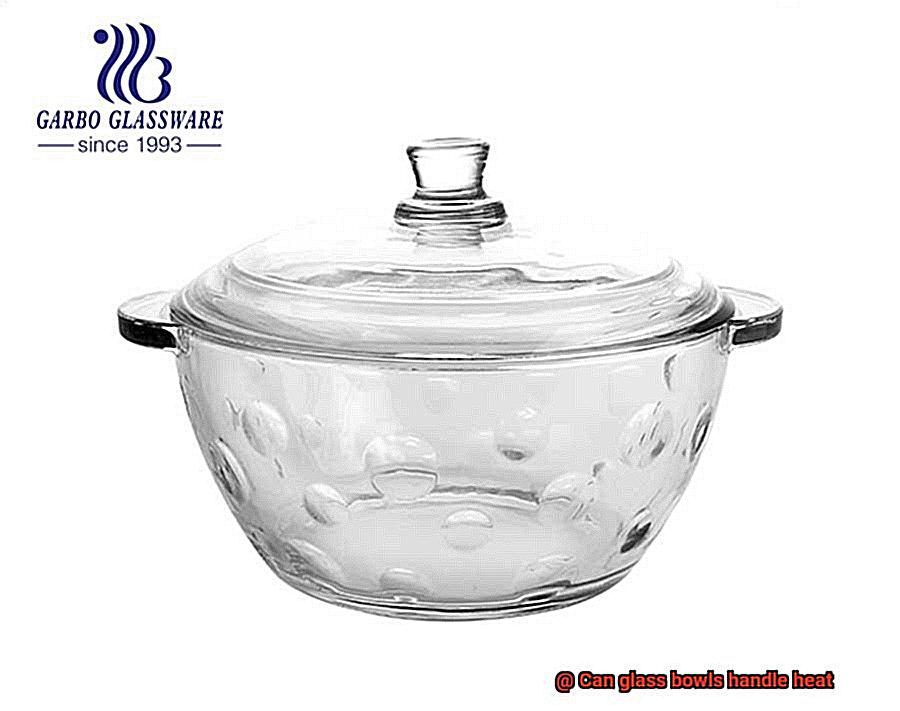
Lastly, it is essential to check the manufacturer’s instructions for temperature limits before using tempered glass in high-heat situations. Different types of tempered glass may have different temperature limits, and it is important to follow these guidelines to prevent accidents.
In conclusion, tempered glass is a strong and durable material that can handle heat to a certain extent. However, caution should be taken when using it for cooking and grilling purposes. Here are some tips to keep in mind:
- Avoid sudden temperature changes that can cause thermal shock.
- Do not expose tempered glass directly to flames or hot surfaces.
- Use protective barriers between the glass and heat source.
- Check the manufacturer’s instructions for temperature limits before use.
How to Safely Use Glass Bowls for Baking and Cooking
Glass bowls are a versatile and popular choice for baking and cooking, but they can be fragile and prone to breaking if not used properly. To ensure that you use glass bowls safely, here are five tips to keep in mind.
Choose the Right Glass Bowl
When selecting a glass bowl for baking or cooking, it’s important to choose one that is specifically designed for the job. High-quality, tempered glass bowls are a great choice as they are designed to withstand high temperatures without breaking.
Preheat Your Oven
Before placing the glass bowl in the oven, always preheat the oven first. This will help to gradually heat up the bowl and reduce the risk of thermal shock, preventing it from cracking or shattering.
Avoid Sudden Temperature Changes
Sudden temperature changes can cause glass bowls to break. For example, don’t take a hot glass bowl out of the oven and immediately fill it with cold ingredients. Instead, allow it to cool down gradually before adding any cold ingredients.
Handle With Care When Hot
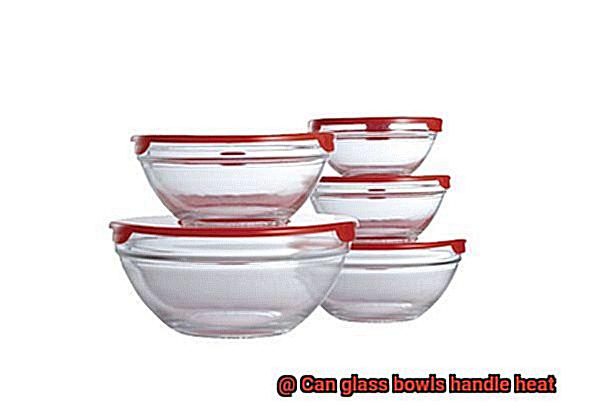
When removing a hot glass bowl from the oven, always use oven mitts or pot holders to protect your hands. Place the bowl on a heat-resistant surface such as a trivet or silicone mat. Avoid stacking hot glass bowls on top of one another as this increases their risk of breakage.
Don’t Place Cold Glass Bowls in a Preheated Oven
Placing a cold glass bowl into a preheated oven can cause it to crack or shatter due to thermal shock. Instead, allow the bowl to come to room temperature before placing it in the oven.
Tips for Avoiding Breakage of Glass Bowls
Glass bowls are a common choice for cooking and baking in many households. They are versatile and easy to use, but using them for high-heat cooking methods such as grilling can be challenging. In this blog post, we’ll share five tips to help you avoid breakage of your glass bowls when cooking with high heat.
Choose the Right Type of Glass
Not all glass types are created equal when it comes to heat resistance. Look for tempered glass or borosilicate glass, which are both designed to withstand high temperatures without breaking. These types of glass are made by heating regular glass to a high temperature and then rapidly cooling it, resulting in stronger and more durable glass.
Avoid Sudden Temperature Changes
One of the most common causes of glass breakage is sudden changes in temperature. Don’t take a glass bowl straight from the freezer and put it on a hot grill. Instead, allow your glass bowl to come to room temperature before exposing it to high heat. Similarly, avoid putting a hot glass bowl into cold water or onto a cold surface.
Preheat Your Oven or Grill
Preheating your oven or grill ensures that the temperature is consistent and helps prevent sudden changes in temperature that can cause glass bowls to break. This is especially important when grilling with glass bowls. Allow your oven or grill to reach the desired temperature before placing your glass bowl inside.
Use a Lower Heat Setting
When cooking with glass bowls, using a lower heat setting than you would with other types of cookware is recommended. This will help prevent the bowl from overheating and breaking. Keep in mind that even tempered glass has its limits and can only handle temperatures up to 450°F without shattering or cracking.
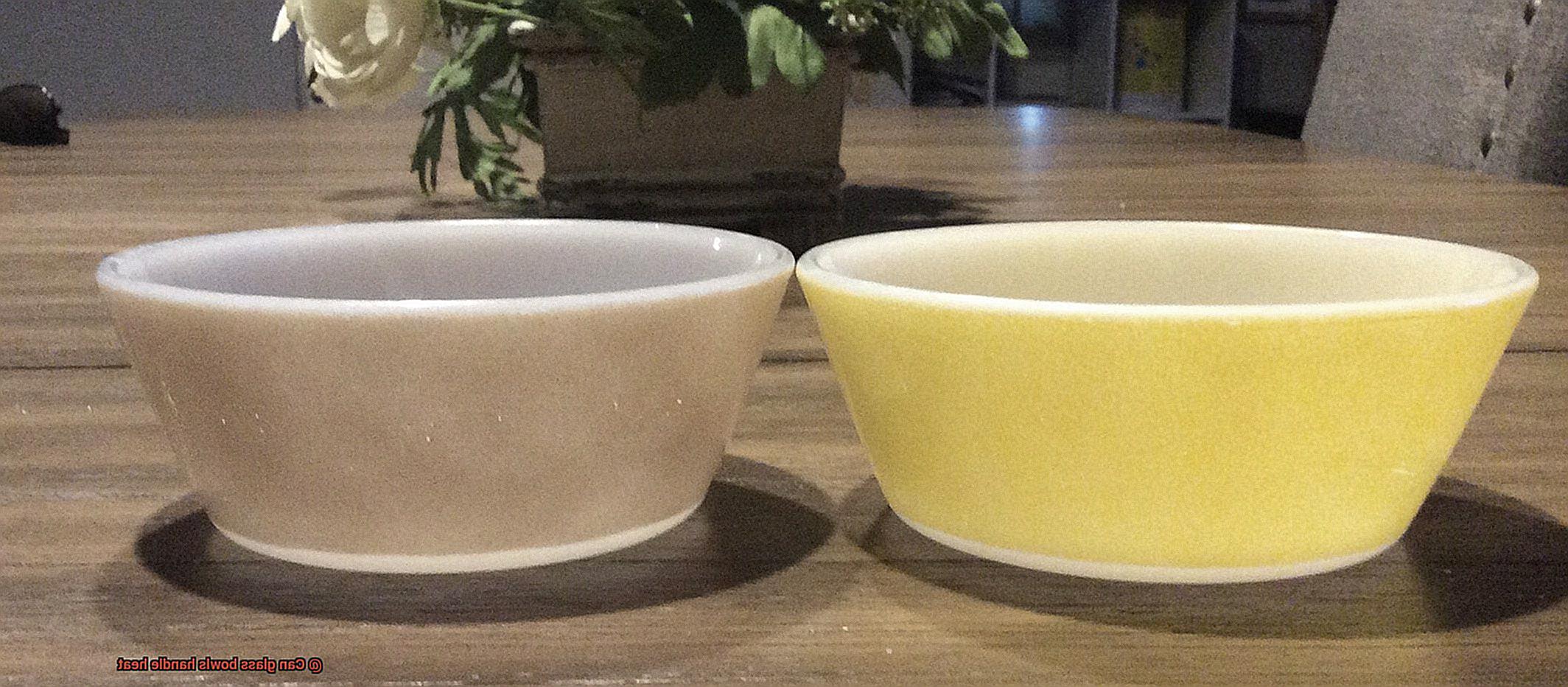
Avoid Contact with Direct Flames
Direct contact with flames can cause the glass bowls to break. If you’re grilling, use indirect heat or a grill pan to protect your glass bowl from direct flame. Placing the glass bowl directly on the grates can cause uneven heating and increase the risk of breakage.
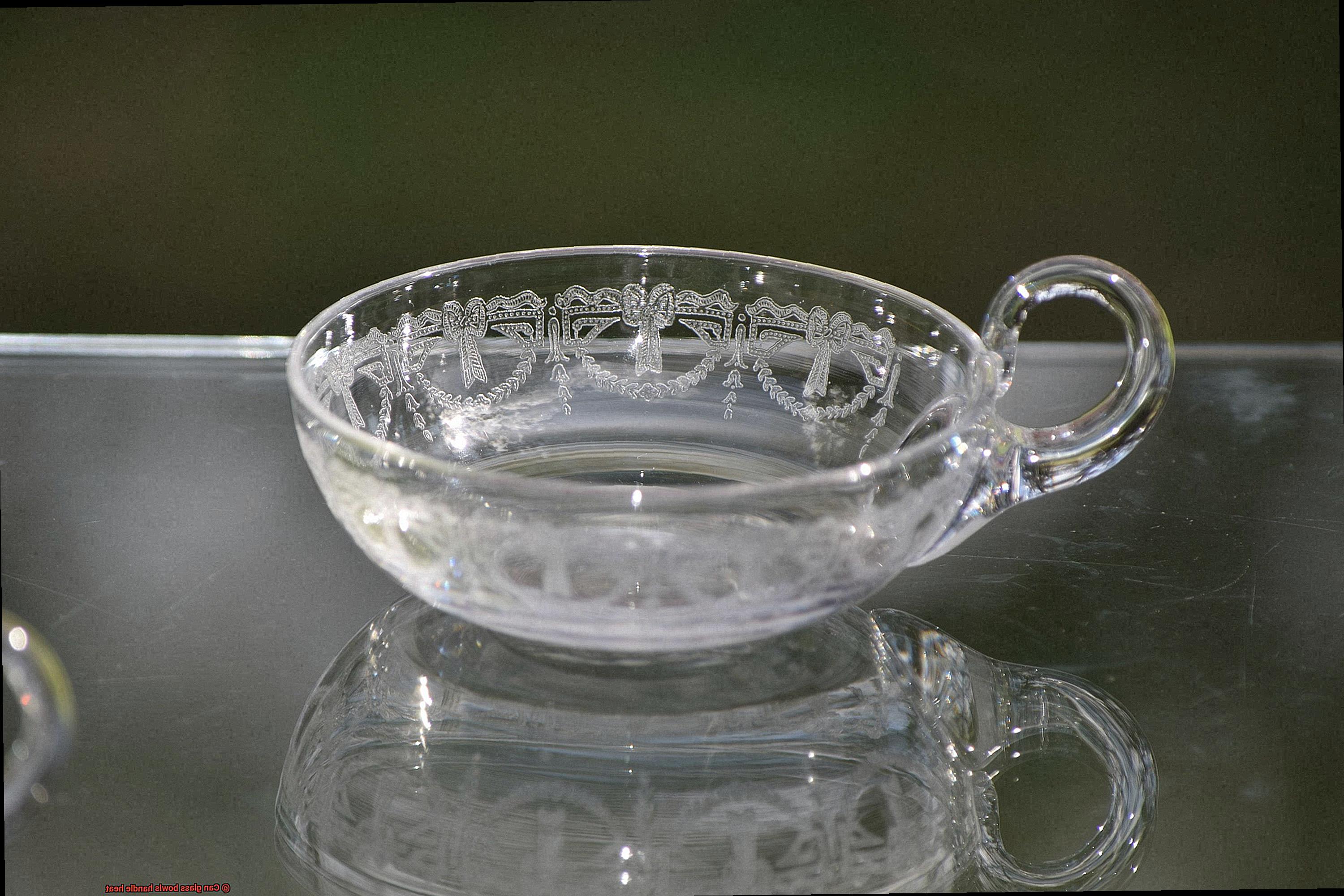
Advantages of Using Glass Bowls
Look no further than glass bowls. As an expert on the advantages of using glass bowls in cooking and baking, I can confidently say that these kitchen staples offer many benefits that will make your time in the kitchen more enjoyable and efficient.
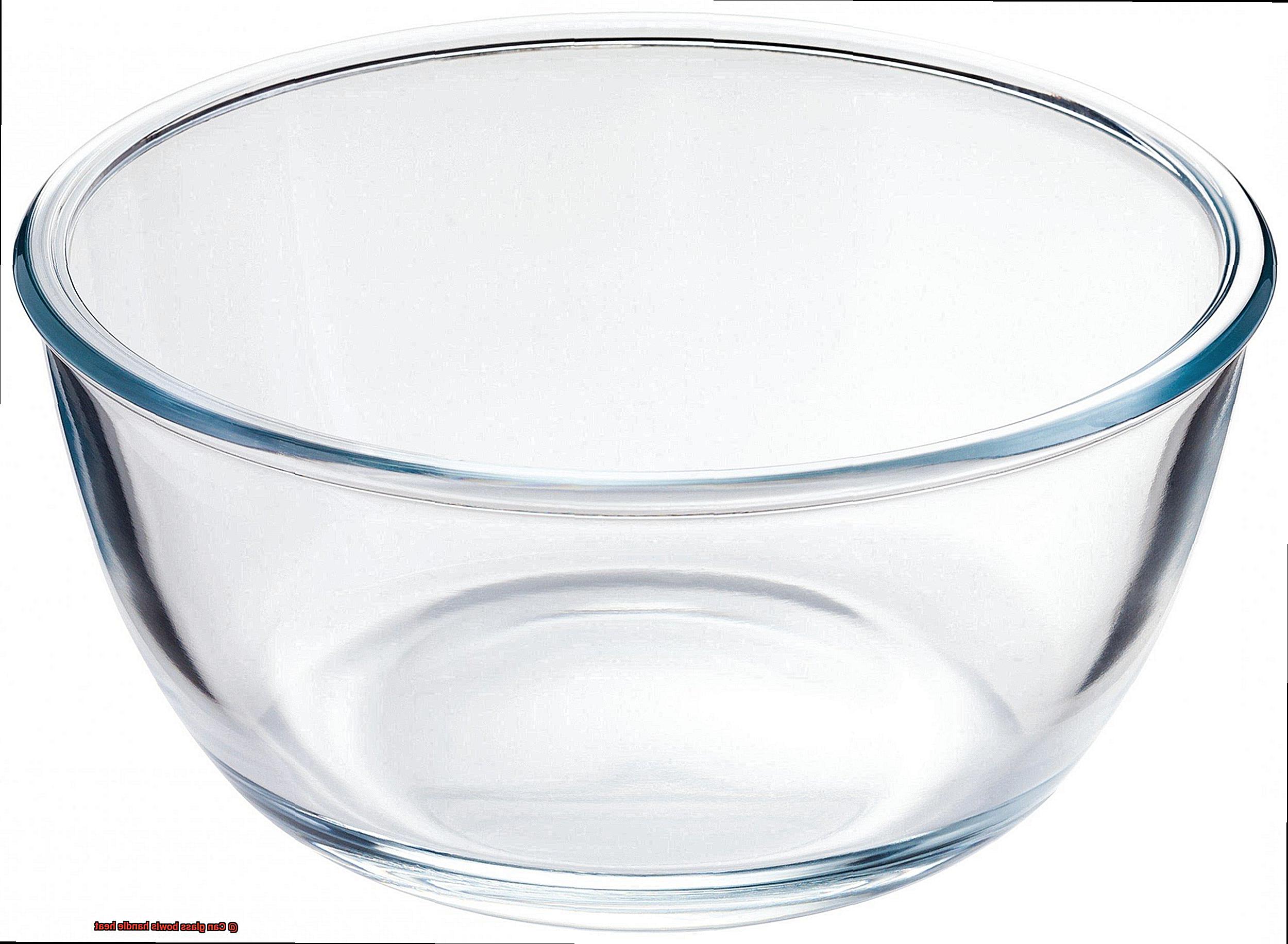
One of the most significant advantages of using glass bowls is their ability to withstand high temperatures without cracking or breaking. Glass is a poor conductor of heat, unlike metal or plastic, making it perfect for use in the oven or microwave. This means you can easily bake or cook your favorite dishes without worrying about damaging your bowls. Say goodbye to expensive replacements and hello to reliable kitchen tools.
Another advantage of glass bowls is their non-reactive properties. Glass won’t react with acidic foods like tomatoes or citrus fruits, which can cause metallic tastes in other materials. Plus, glass doesn’t absorb flavors or odors, so you can use the same bowl for different types of dishes without worrying about cross-contamination. This feature makes glass bowls an ideal choice for marinating meats or storing leftovers.
Cleaning and maintaining glass bowls is also a breeze. They are dishwasher safe and won’t stain or warp over time. Unlike plastic containers, which can become discolored and brittle over time, glass bowls are more durable and will last you for years to come. Plus, their transparent nature makes it easy to see any leftover food residue, ensuring a more thorough clean.
In terms of aesthetics, glass bowls offer transparency that allows you to see the contents inside clearly. They come in a variety of shapes and sizes to suit any cooking or baking need. Whether you’re whipping up a batch of cookies or creating a colorful salad, glass bowls provide an elegant presentation at the table.
Disadvantages of Using Glass Bowls
Firstly, fragility is a major concern. Glass bowls are fragile and can easily break or crack when exposed to sudden changes in temperature. This makes them unsuitable for high-heat cooking methods such as grilling or broiling, which can put a damper on your culinary ambitions.
Uneven heating is another disadvantage of glass bowls. Glass is not a good conductor of heat, which means it takes longer to heat up and cool down than other materials like metal or ceramic. As a result, it can lead to uneven heating and cooking, making it difficult to achieve consistent and predictable results.
Furthermore, glass bowls are not as versatile as other materials. They cannot be used on the stovetop or in the microwave, limiting their functionality in the kitchen. If you’re someone who’s always on the go and relies on quick microwave meals or stovetop cooking, then glass bowls may not be the best option for you.
Staining and scratching are also potential issues with glass bowls. They can become stained over time, which can affect their appearance. Additionally, scratches can create areas where bacteria can grow, making them less hygienic than other materials.
Lastly, cost can also be a factor when it comes to glass bowls. While some may be relatively inexpensive, high-quality glassware can be quite costly. This can make them less accessible for budget-conscious cooks who are looking for affordable kitchen tools.
Alternatives to Using Glass Bowls for High Heat Applications
The last thing you want is a shattered mess in the middle of your meal prep or worse, an injury caused by the explosion of a glass bowl. Fortunately, you don’t have to stick to glass bowls for high heat applications. As an expert on this topic, I’m excited to share some of the best alternatives available.
Firstly, consider ceramic or stoneware bowls. These bowls are designed to withstand high temperatures and are ideal for baking. With a maximum temperature limit of 500 degrees Fahrenheit, they’re perfect for all your baking needs. Plus, they come in various sizes and styles that cater to different home cooks’ preferences.
Another fantastic alternative is metal bowls, such as stainless steel or aluminum. These types of bowls are excellent for cooking on the stovetop or in the oven. They’re durable, long-lasting and provide even heating and consistent results. You can also use them for grilling or broiling in the oven.
If you prefer something flexible, silicone bowls are an excellent option. They’re heat-resistant and can withstand high temperatures without melting or warping. Silicone bowls are also non-stick and straightforward to clean and maintain, making them perfect for use in the oven or on the grill.
2YW6zeMCT0E” >
Conclusion
In summary, we have delved into the question of whether glass bowls can handle heat in this blog post. Glass bowls are a versatile and widely used kitchen utensil that serves various purposes, from mixing ingredients to serving food. However, using them for high-heat cooking methods such as grilling or broiling can be a challenge due to their fragile nature.
To address this issue, tempered glass is an excellent choice for those seeking a sturdy and durable material that can withstand many applications. Nonetheless, it has its limitations, and it’s crucial to exercise caution when using it for cooking and grilling purposes.
To ensure safe usage of glass bowls in baking and cooking, it’s vital to select the appropriate type of glass bowl, preheat your oven or grill adequately, avoid sudden temperature changes, handle with care when hot, and never put cold glass bowls in a preheated oven.
While glass bowls offer transparency that enables you to see the contents clearly and non-reactive properties making them ideal for marinating meats or storing leftovers; they do have some drawbacks such as fragility, uneven heating, limited functionality in the kitchen, staining and scratching issues as well as cost concerns.
Fortunately, there are alternatives available such as ceramic or stoneware bowls designed to withstand high temperatures; metal bowls like stainless steel or aluminum which provide even heating; and silicone bowls which are heat-resistant and non-stick.

